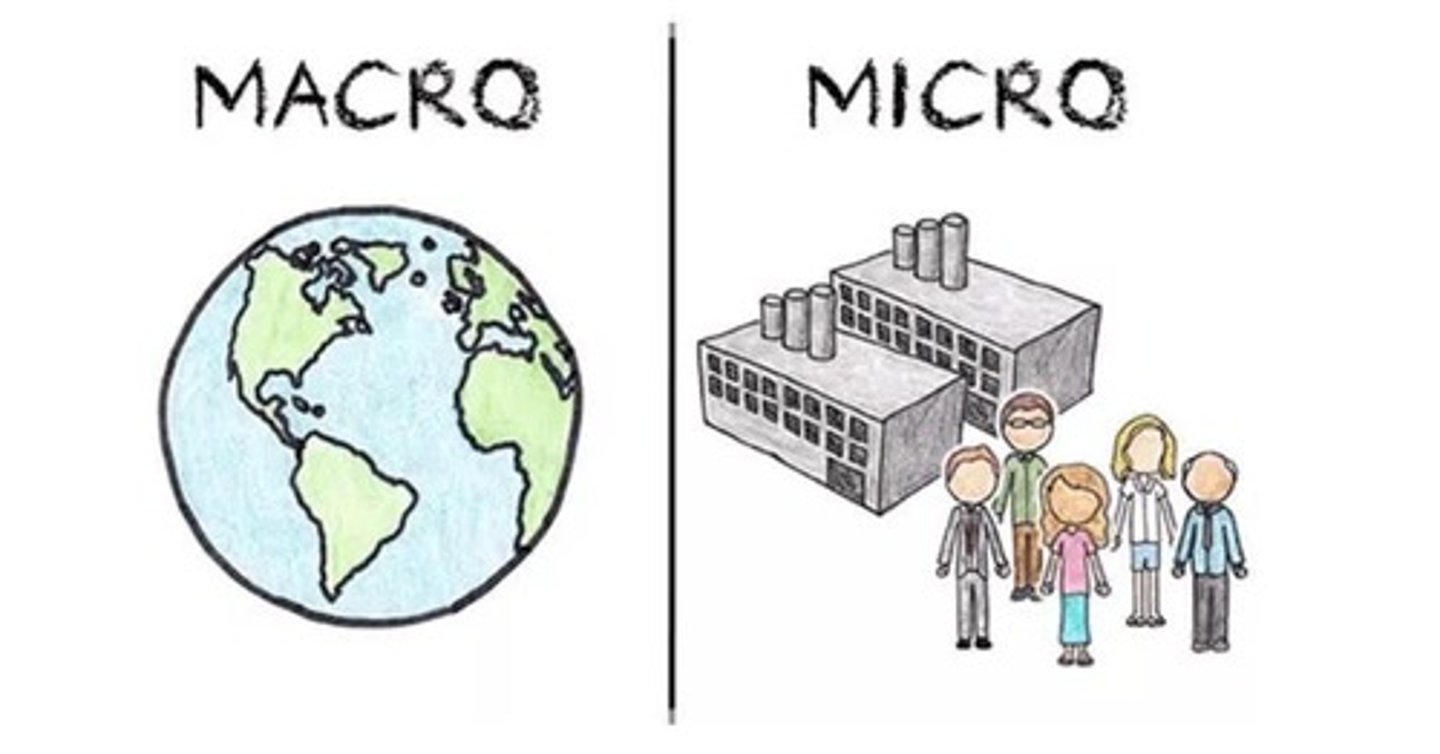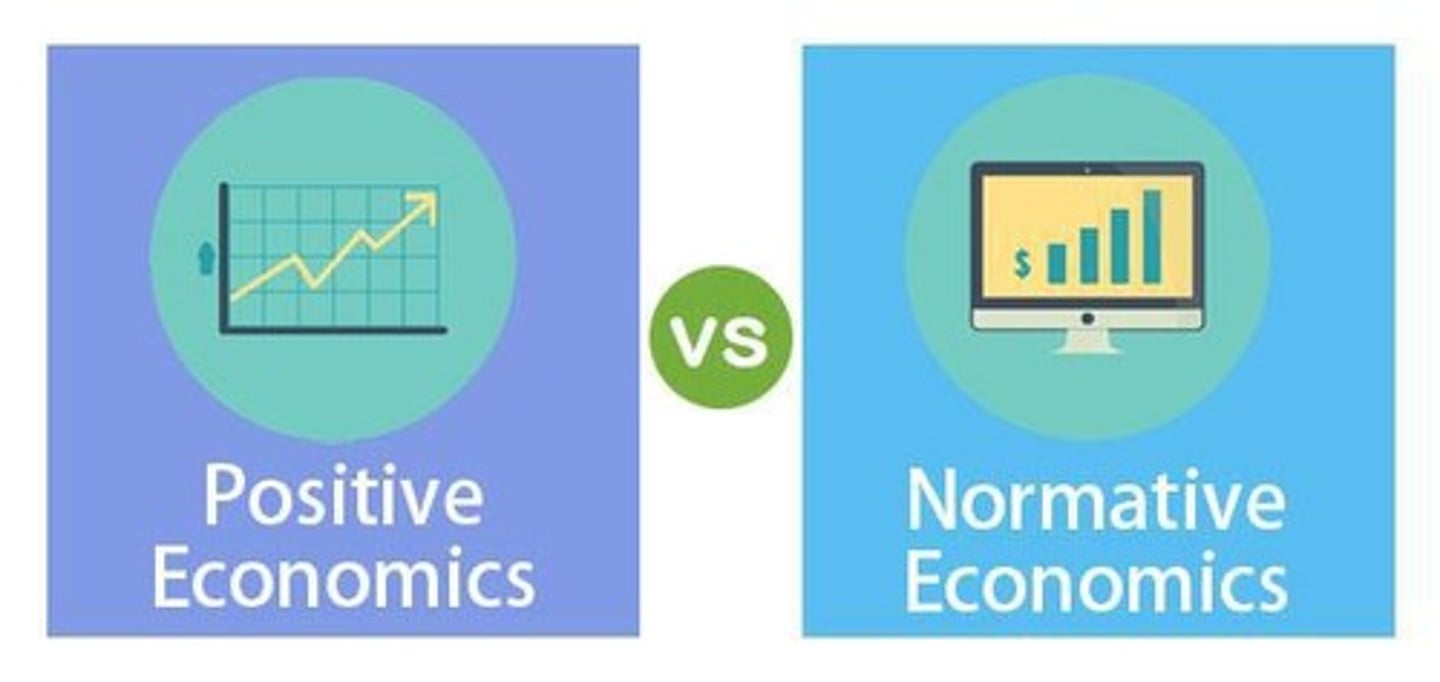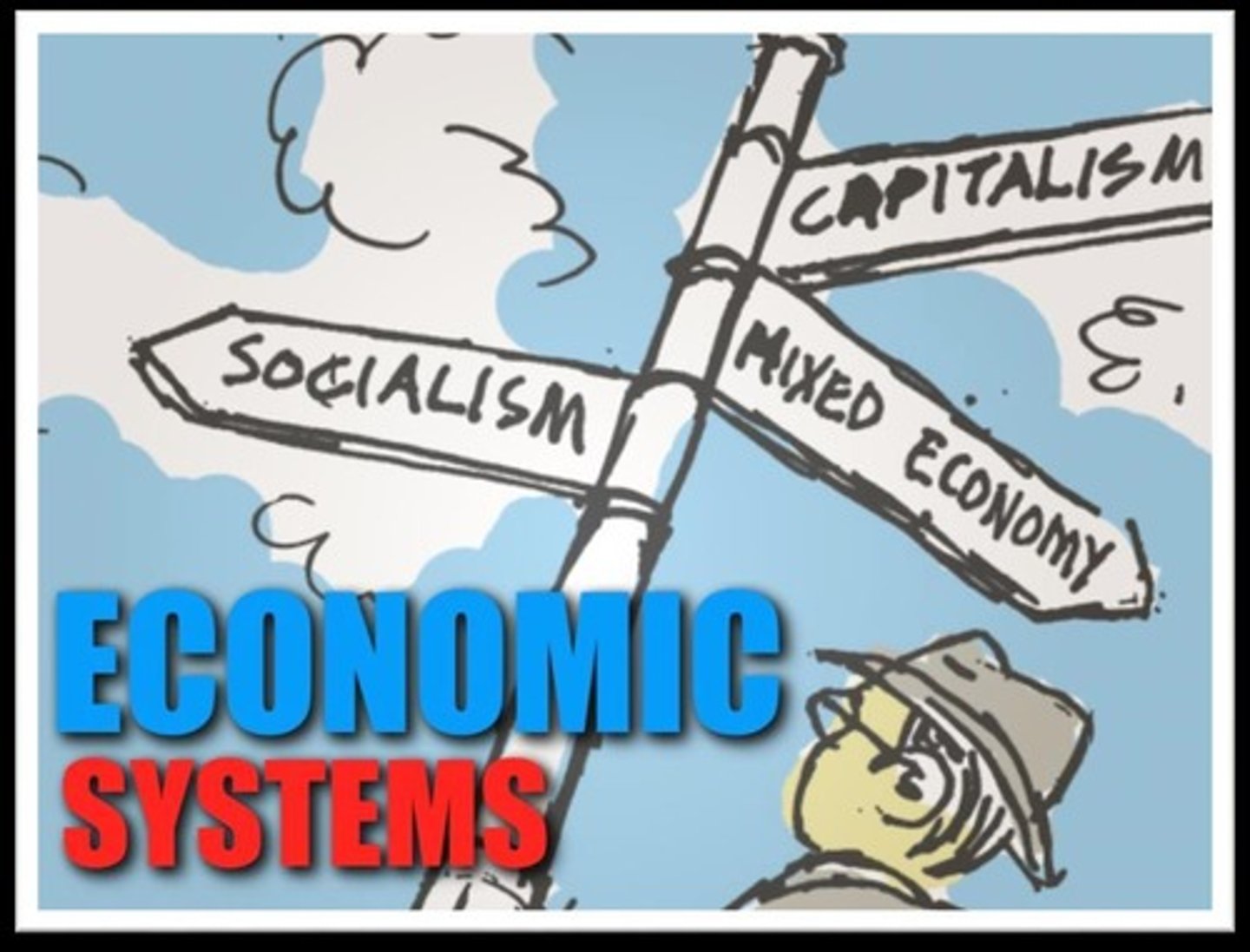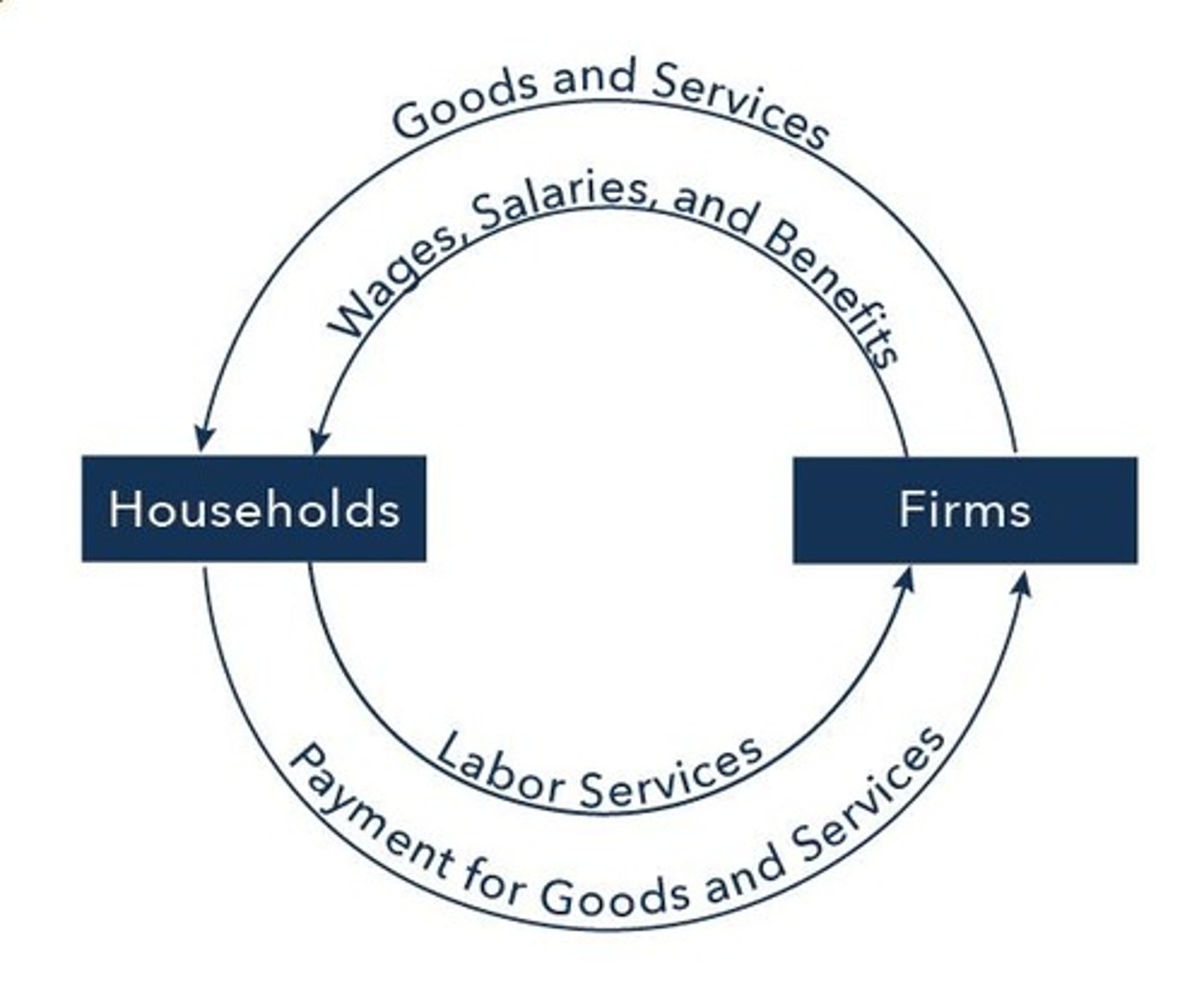Introduction to Economics: Principles, Markets, and Elasticity
1/163
There's no tags or description
Looks like no tags are added yet.
Name | Mastery | Learn | Test | Matching | Spaced |
|---|
No study sessions yet.
164 Terms
Economics
The study of how individuals and societies choose to use the scarce resources that nature and previous generations have provided.
Opportunity Cost
The best alternative that we forgo or give up when we make a choice or a decision.
Marginalism
The process of analyzing the additional or incremental costs or benefits arising from a choice or decision.
Efficient Market
A market in which profit opportunities are eliminated almost instantaneously.
Microeconomics
Examines the function of individual industries and the behavior of individual decision-making units, that is, firms and households.
Macroeconomics
Examines the economic behavior of aggregates such as income, employment, output, and so on - on a national scale.

Positive Economics
An approach to economics that seeks to understand behavior and the operation of systems without making judgements. It describes what exists and how it works.
Normative Economics
An approach to economics that analyzes outcomes of economic behavior, evaluates them as good or bad, and may prescribe courses of action.

Normative
Makes recommendations, not based on tested facts, tells you what should be/have been.
Positive
Connects cause and effects, based on tested facts, tells you what is/was.
Thinking Like an Economist
Economists try to address their subject with a scientist's objectivity, devising theories, collecting data, and analyzing these data to verify or refute their theories.
Scientific Method
A method of inquiry used in developing and testing theories about how the world works.
Observation, Theory, and More Observation
A process in economics where experiments are often difficult, and economists use whatever data the world provides.
Assumptions
Basic premises that economists use to build their theories and models.
Economic Models
Simplified representations of complex economic processes used to analyze and predict economic behavior.
Natural Experiments
Historical events that provide opportunities to study the effects of key natural resources on the world's economies.
Assumptions in Economics
Economists make assumptions to simplify the complex world and make it easier to understand.
Ceteris Paribus
Device used to analyze the relationship between two variables while the values of other variables are held unchanged.
Tradeoffs
To get one thing, you have to give up something else. Making decisions requires trading off one goal against another.
Cost of Something
Decision-makers have to consider both the obvious and implicit costs of their actions.
Marginal Benefit (MB)
The additional benefit received from consuming one more unit of a good or service.
Marginal Cost (MC)
The additional cost incurred from producing one more unit of a good or service.
Rational Decision-Maker
A rational decision-maker takes action if and only if the marginal benefit of the action exceeds the marginal cost.
Incentives
Behavior changes when costs or benefits change.
Trade
Trade allows each person to specialize in the activities he or she does best.
Invisible Hand
Households and firms that interact in market economies ********* they are guided by an 'invisible hand' that leads the market to allocate resources efficiently.
Government Intervention
When a market fails to allocate resources efficiently, the government can change the outcome through public policy.
Standard of Living
A country's standard of living depends on its ability to produce goods and services.
Money Printing
When a government creates large quantities of the nation's money, the value of the money falls, causing prices to increase.
Inflation and Unemployment Tradeoff
Reducing inflation often causes a temporary rise in unemployment.
Economic Activity Organization
The opposite of market organization is economic activity that is organized by a central planner within the government.
Productivity and Income
As a nation's productivity grows, so does its average income.
Market Failures
Examples of market failures include monopolies and pollution.
Time Horizons in Economics
Different assumptions are made when studying the effects of a policy change over different time horizons.
Economic Problems
Economics is concerned with the utilization of scarce resources for production, necessitating the development of an economic system that responds to the needs of its members.
What to Produce?
The economic society must determine consumers' demands through market study and consumer research, considering factors like physical environment, habits, culture, and customs.
How to Produce?
Choosing how to produce goods or services involves considering the availability and cost of resources, allocation of resources, value of output versus inputs, and available technology.
How Much to Produce?
Determination of how much of a product to produce depends on consumer demand and knowledge of people's tastes and desires, which are changeable.
For Whom to Produce?
Society must consider for whom to produce goods and services, weighing whether to prioritize poor consumers or rich individuals.
Market Economy (Capitalism)
Characterized by private property ownership, a pricing process, competition, and a profit motive.

Command Economy (Dictatorship)
The government owns most property resources and major factors of production, conducting and regulating economic activity through central planning.
Socialist Economy (Mixed)
Abandons profit motive for production for use, with central planning determining production goals and resource allocation.
The Role of the Government
Government involvement may improve efficiency and fairness in resource allocation, but poor functioning can lead to corruption and waste.
Mixed Systems, Markets and Governments
All real systems are in some sense 'mixed'.
Scarcity
A fundamental economic problem of having seemingly unlimited human wants in a world of limited resources.
Choice
The act of selecting among alternatives in the face of scarcity.
Interdependence
The reliance of consumers and producers on each other in an economy.
Gains from Trade
The benefits that arise from trading goods and services, allowing for specialization and increased efficiency.
Consumer Research
The process of gathering information about consumer preferences and behaviors to inform production decisions.
Resource Allocation
The distribution of resources among competing uses.
Production Goals
Targets set by a central authority to determine the quantity and type of goods and services to be produced.
Central Planning Authority
An organization that makes decisions about the allocation of resources and production in a command economy.
Profit Motive
The incentive for individuals and businesses to improve their financial well-being through production and trade.
Economic Activity
The production, distribution, and consumption of goods and services in an economy.
Market economies
Economies in which the government plays a major role, involving regulation and income redistribution.
Reasons for Government Involvement
1. Market systems do not always produce what people want at the lowest cost - there are inefficiencies. 2. Rewards (income) may be unfairly distributed and some groups may be left out. 3. Periods of unemployment and inflation recur with some regularity.
Constrained choice
The limitation on choices due to scarcity of resources.
Investment
The process of using resources to produce new capital.
Capital
Resources that can be used to produce goods and services, which do not need to be tangible.
Circular Flow of Economic Activities
The model that illustrates the flow of goods, services, and money in an economy.

Households
The consuming units in an economy.
Entrepreneur
A person who organizes, manages, and assumes the risks of a firm.
Firm
An organization that transforms resources (inputs) into products (outputs).
Market for resources
The market where households supply resources to business firms in exchange for wages, salaries, rent, interest, and profit.
Market for consumer goods and services
The market where households are the buyers and business firms are the sellers of goods and services.
Input markets
Markets where firms demand inputs to produce outputs.
Output markets
Markets where households demand products produced by firms.
Consumption expenditures
The total spending by households on goods and services.
Wages
Payments made to labor for their work.
Rent
Payments made for the use of land or property.
Interest
Payments made for the use of borrowed money.
Profit
The financial gain obtained when revenue exceeds costs.
DEMAND
The amount of various quantities of goods and services which buyers are willing and able to purchase at a given price, time and place, ceteris paribus.
Demand Schedule
A listing of the different quantities of goods and services that buyers will purchase given the various alternative prices.
Market Demand
The total demand obtained by taking the horizontal summation of all individual demand of the consumers in the market.
Demand Curve
A plotted demand schedule.
Movement Along Demand Curve
The change in the quantity demanded due to the changes in the price of the product when all other factors are held constant.
Change in Demand
The shift in the entire demand schedule due to the changes in some factors that were held constant.
LAW OF DEMAND
States that as the price increases, the quantity demanded decreases; and as the price decreases, the quantity demanded increases, ceteris paribus.
SUPPLY
The amount of various quantities of goods and services which sellers are willing and able to sell at a given price, time and place, ceteris paribus.
Supply Schedule
The listing of the different quantities of goods and services that sellers will sell given the various alternative prices.
Market Supply
The horizontal summation of all individual supply of the consumers in the market.
Supply Curve
A plotted supply schedule.
Movement Along Supply Curve
The change in the quantity supplied due to the changes in the price of the product when all other factors are held constant.
Change in Supply
The shift in the entire supply schedule due to the changes in some factors that were held constant.
LAW OF SUPPLY
States that as the price increases, the quantity supplied also increases, and as the price decreases, the quantity supplied also decreases, ceteris paribus.
Income
The sum of all household's wages, salaries, profits, interest payments, rents and other forms of earnings in a given period of time.
Normal Good
A good for which an increase in income leads to an increase in demand, ceteris paribus.
Inferior Good
A good for which an increase in income leads to a decrease in demand, ceteris paribus.
Substitutes
Goods that can serve as replacements for one another.
Compliments
Goods that 'go together'; a decrease in the price of one results in an increase in demand for the other and vice versa.
Tastes and Preferences
Factors that determine the combinations of goods and services that a household is able to buy, influenced by individual choices.
Volatility of Tastes
The tendency of consumer preferences to change over time.
Idiosyncratic Tastes
The unique preferences of individuals that can vary widely among different people.
Expectations
Your expectations about the future may affect your demand for a good or service today.
Number of Buyers
Market demand is derived from individual demands, it depends on all those factors that determine the demand of individual buyers.
Cost of Production
For a firm to make a profit, its revenue must exceed its costs.
Price of inputs
The supply of a good is negatively related to the price of the inputs used to make the good.
Added Tax
As the added tax contributes to the price of the product, the firm decreases the supply of the product.
Technology
The invention of the machines used in production reduces the amount of labor necessary to make a product.